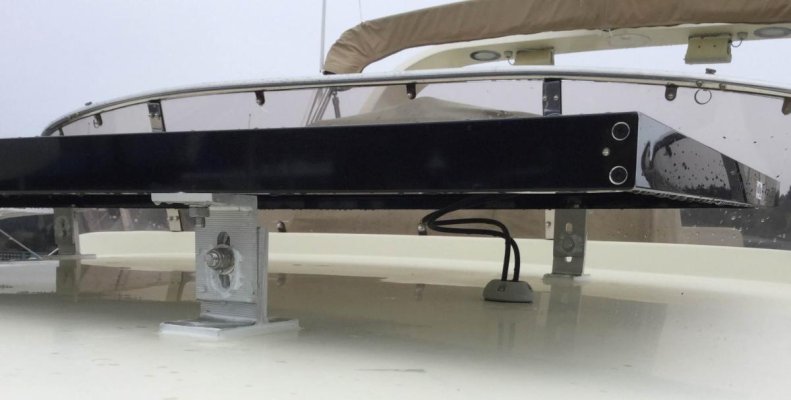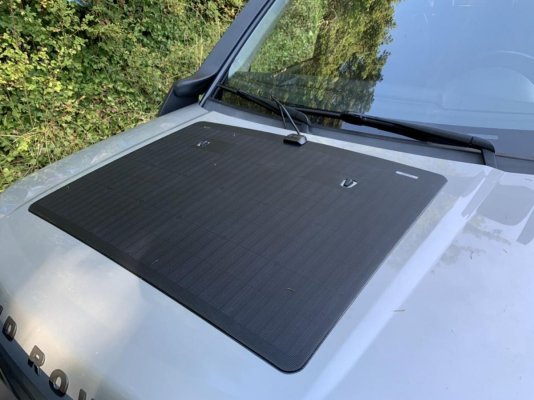- Joined
- Apr 15, 2008
- Messages
- 13,731
- Location
- California Delta
- Vessel Name
- FlyWright
- Vessel Make
- 1977 Marshall Californian 34 LRC
I went with 5x100W Renogy rigid panels since I was using rail mounts on my fwd rails plus one more that is able to be repositioned as needed. I found that my panel size constraints limited the panel choices for me since I wanted the panels to stow between the SS fwd rail and the caprail. I've got no regrets w/ the Renogy panels or their MPPT controller.



